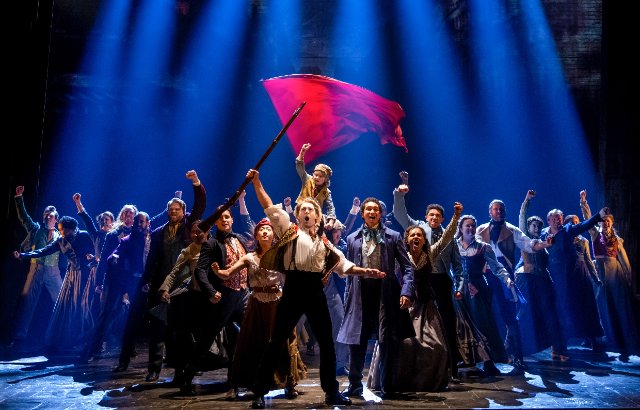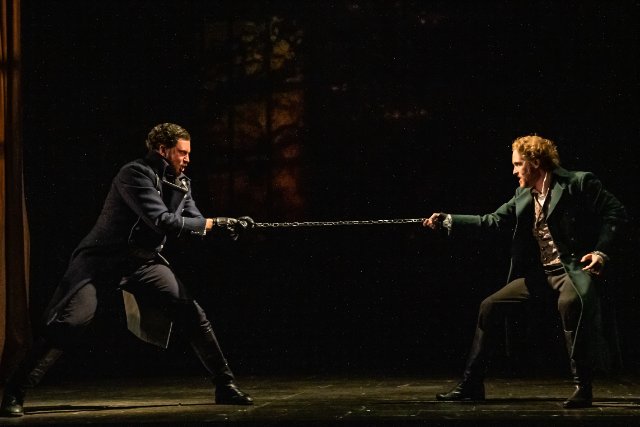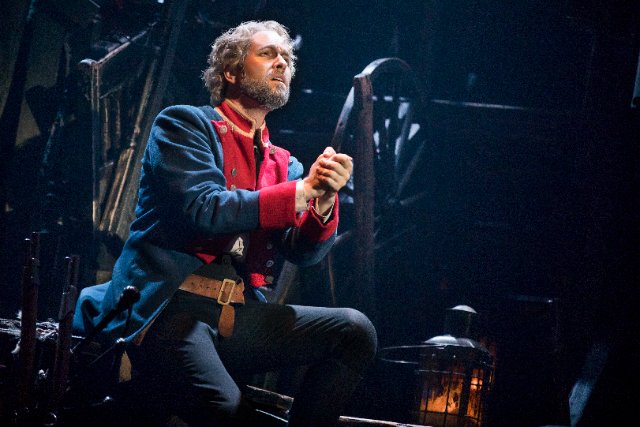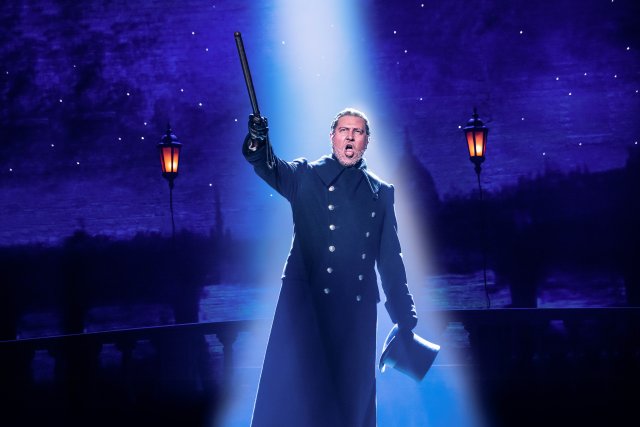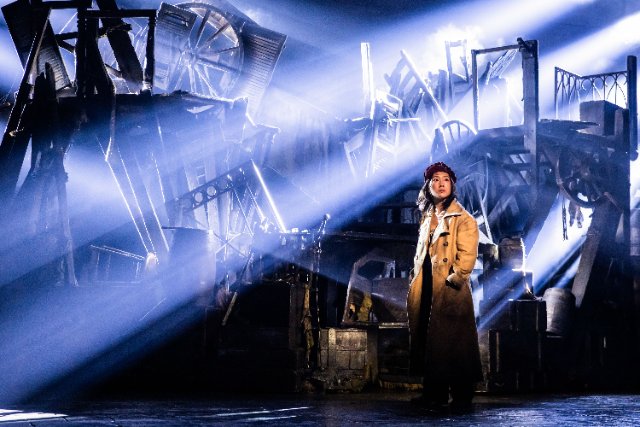Les Misérables
A Powerful Indictment of Justice in an Unjust Society
By: Victor Cordell - Jul 08, 2023
Though the stage musical descends from the European operetta, it became a unique art form associated with the American theater and particularly with Broadway. Other English-language artistic teams have crafted musicals that have succeeded in the United States, but rarely has one that originated in a foreign language reached broad acceptance.
The two most popular musicals to fit that category were created by two Frenchmen whose names are little known and won’t roll off the American tongue. They are composer Claude-Michel Schönberg and lyricist Alain Boublil. In the 1980s, they brought to the stage in English two stellar musicals – “Miss Saigon,” and relevant to this review, “Les Misérables.” Broadway San Francisco and Producer Cameron Mackintosh present the national touring production of “Les Mis” with stunning staging and uniformly strong singing voices. The audience was transported to a radically different time and place and was wildly appreciative of the trip.
The source is one of literature’s greatest novels, Victor Hugo’s “Les Misérables,” which is set against the events of its time. The central figure, Jean Valjean spends his adult life paying for having stolen a morsel of bread for his sister. Even after a long prison sentence, he finds himself needing to hide and lie to avoid the relentless Inspector Javert, who obsesses over making Valjean pay endlessly for his petty crime. Of course, the audience aligns with the thief rather than the lawman, as Hugo’s plea for reform of the justice system is clear. Meanwhile, in 1823, Fantine, a young woman who becomes destitute, dies and asks Valjean to take care of her daughter Cosette.
A second plot line concerns the Paris Uprising of 1832. Act 2 plays out largely at a barricade set up by the republicans who are protesting the re-establishment of the monarchy. The confrontations with the authorities will test the mettle of Valjean, Javert, and Cosette’s lover Marius. The stage is ablaze with gunfire and conflict, and many will die before the battle is over.
The music of “Les Mis” is appealing, but in large part, unmemorable. What it does have is one powerful song that has grown into public consciousness well beyond the theater – “I Dreamed a Dream.” While many signature songs from musicals put an exclamation point on the climax, this song comes very early and is delivered by Fantine, who is several rungs down the ladder of important characters. The good news is that Haley Dortch delivers a beautiful rendition, and it is a truly beautiful song. What’s more, key phrases from the melody and even the rhythm of the lyrics recur throughout the play, and the haunting and suggestive familiarity adds to the overall ambiance.
One aspect of the music is the demands that it makes on Valjean, played with sensitivity and sung with panache by an exemplary Nick Cartell. Valjean’s music is bimodal in range, and Cartell must often make musical leaps from the lower part of his range to the top while quickly switching from full voice to falsetto. He accomplishes this with great skill. As Javert, a very impressive Preston Truman Boyd faces a different challenge. He is full of bile and bitterness, and he often sings with rage that is just a notch below uncontrollable.
Although “Les Mis” clocks in at over three-and-a-quarter hours, the pace is quick and the action commands the attention. Through many clever, well-designed sets, the staging is among the darkest and most brooding in the genre, with low lighting and generous use of smoke. The peasants’ costumery adds to the overall downtrodden effect. Hugo’s artistry as a painter inspired the set design, but it appears that the novelist was in turn inspired by some of France’s most eminent early-and-mid 19th century painters. We see the unstable action tilt from Delacroix; the dangling, supine corpse from David; the landscaping from Corot; and the grizzly peasantry from Daumier. Set change, which is brisk, is facilitated by the broad use of backlit projections as distant scenery, reducing the props to be moved.
In their two highly successful musical collaborations, Schönberg and Boublil have drawn heavily on the Andrew Lloyd Webber playbook in three ways. This musical is written in sung-through fashion. Like opera, rather than traditional musicals, all of the text is sung. A second commonality is that “Les Mis” contains a single beautiful anthem that is separable from the musical as a pop song and can be used as a promotion in advance of the play’s staging. Finally, the show has a strong graphic logo that serves as an identifier that also aids in marketing. In this case, it is the head shot of a straggly-haired Cosette as a waif in front of the French flag.
Altogether, the result is a musical that explores the human condition, starting with duty, love, forgiveness, and redemption. Its many assets have propelled it to becoming one of the longest running musicals both on Broadway and the West End.
“Les Misérables” with music by Claude-Michel Schönberg, French lyrics by Alain Boublil and Jean-Marc Natel, English lyrics by Herbert Kretzmer, and based on the novel of the same name by Victor Hugo is produced by Cameron Mackintosh, presented by the producer and Broadway San Francisco, and plays at the Orpheum Theatre, 1192 Market Street, San Francisco, CA through July 23, 2023.

